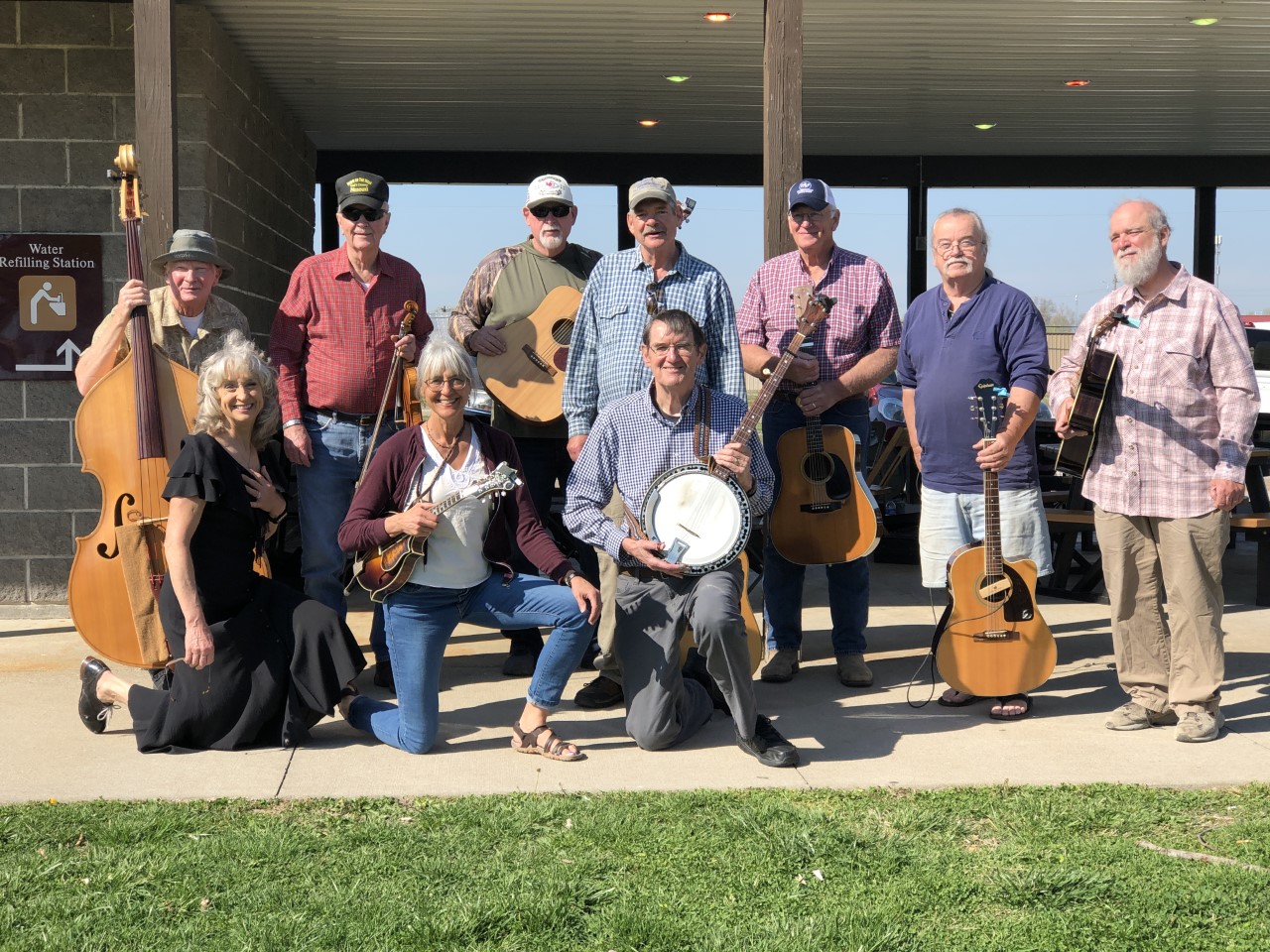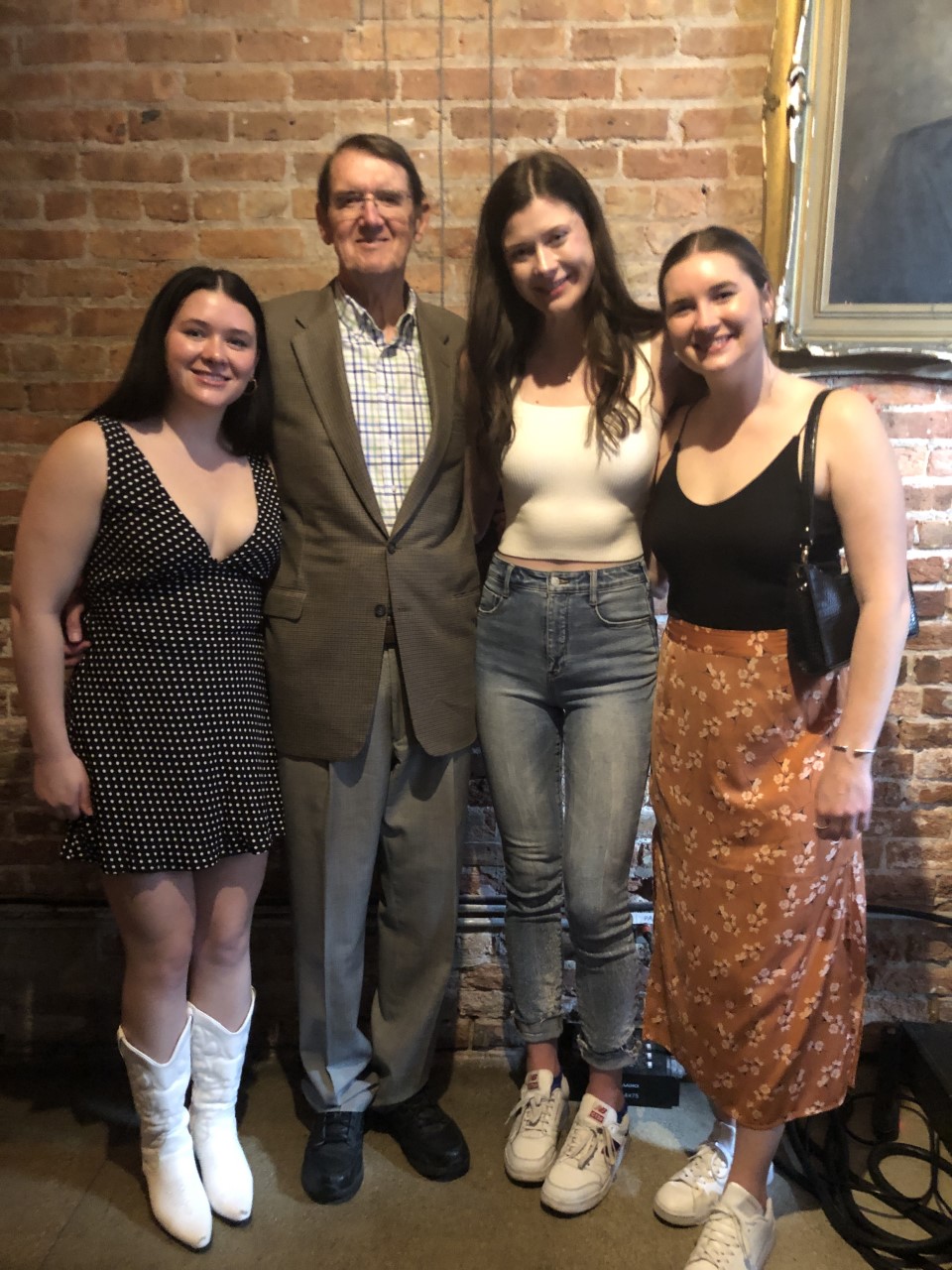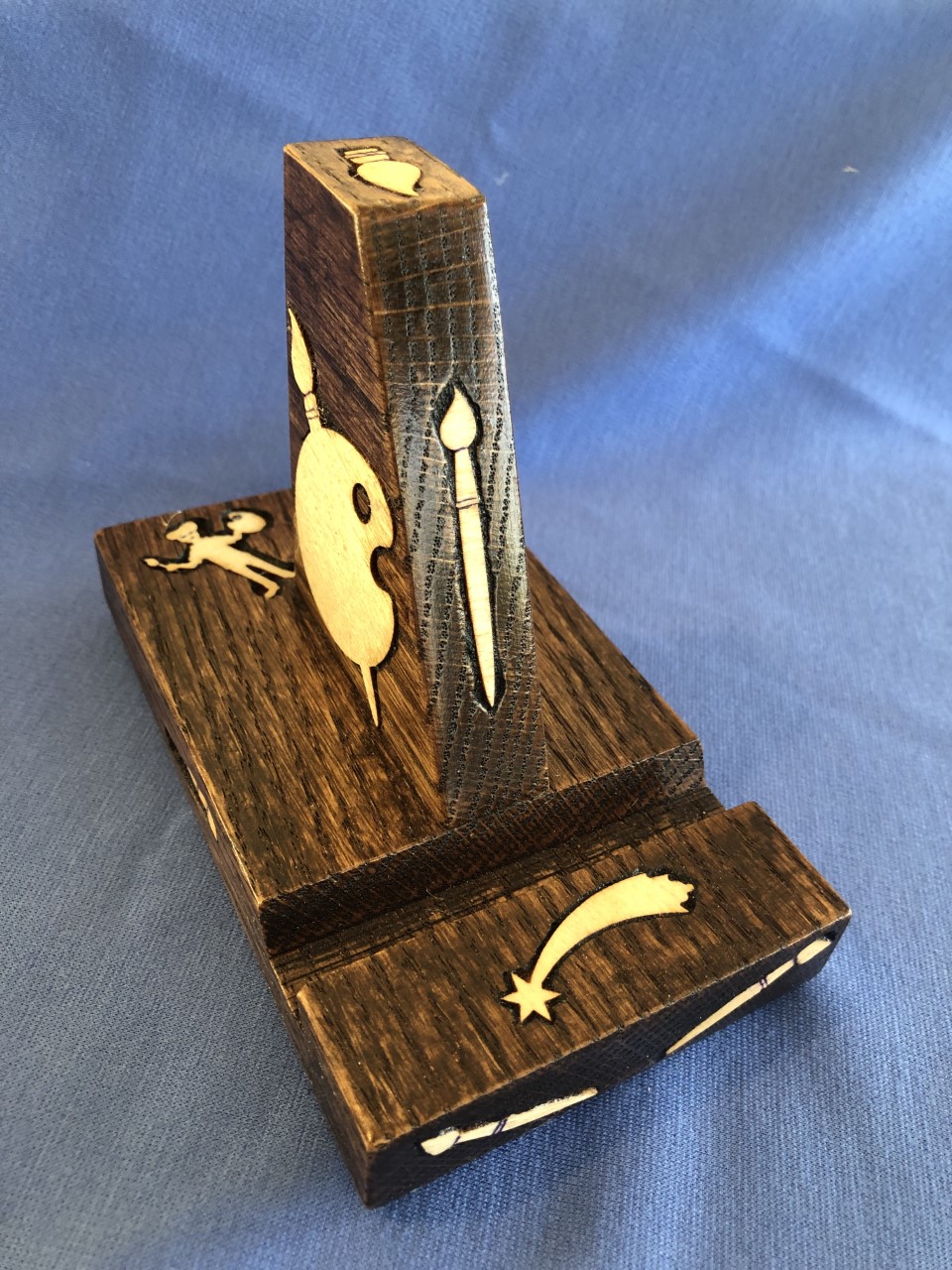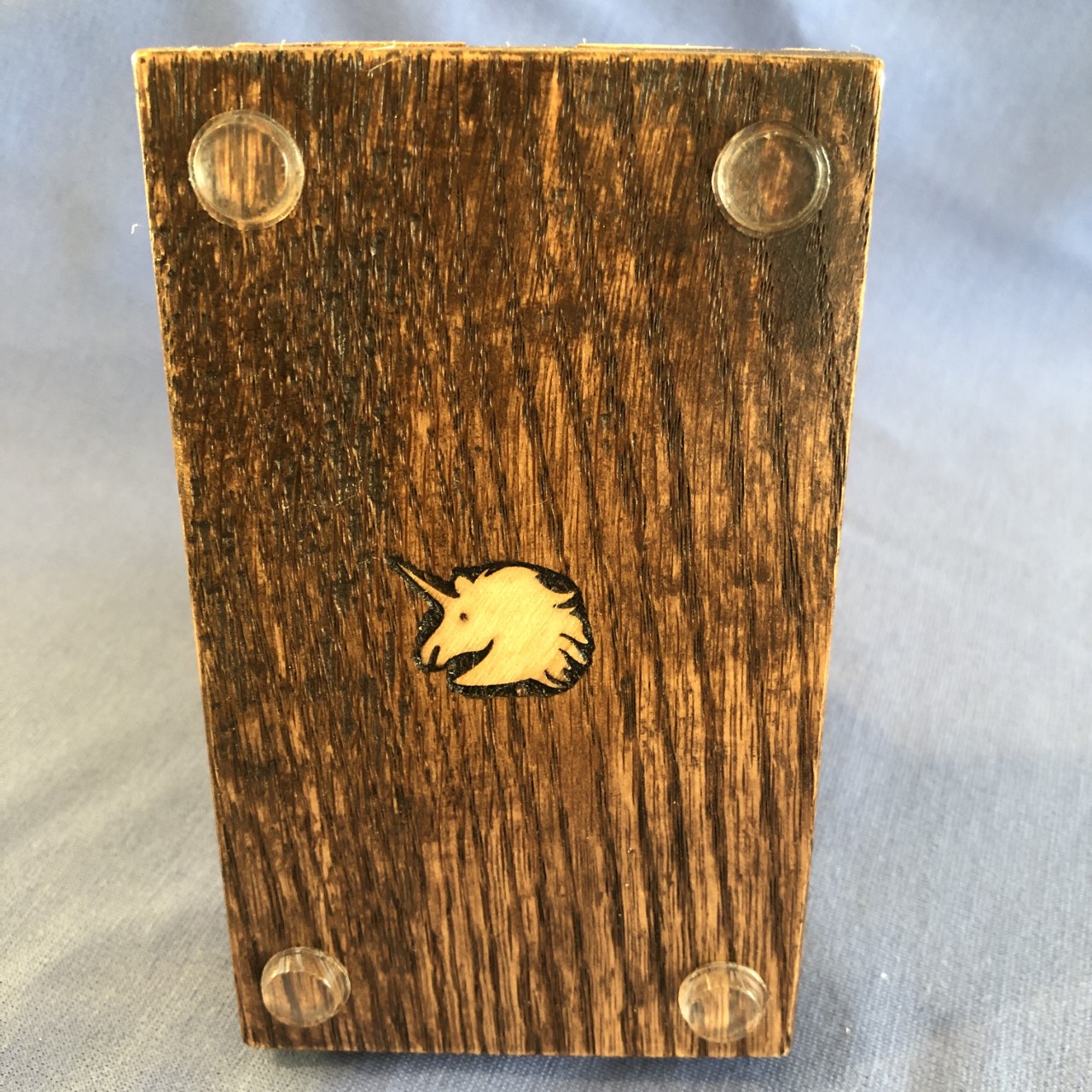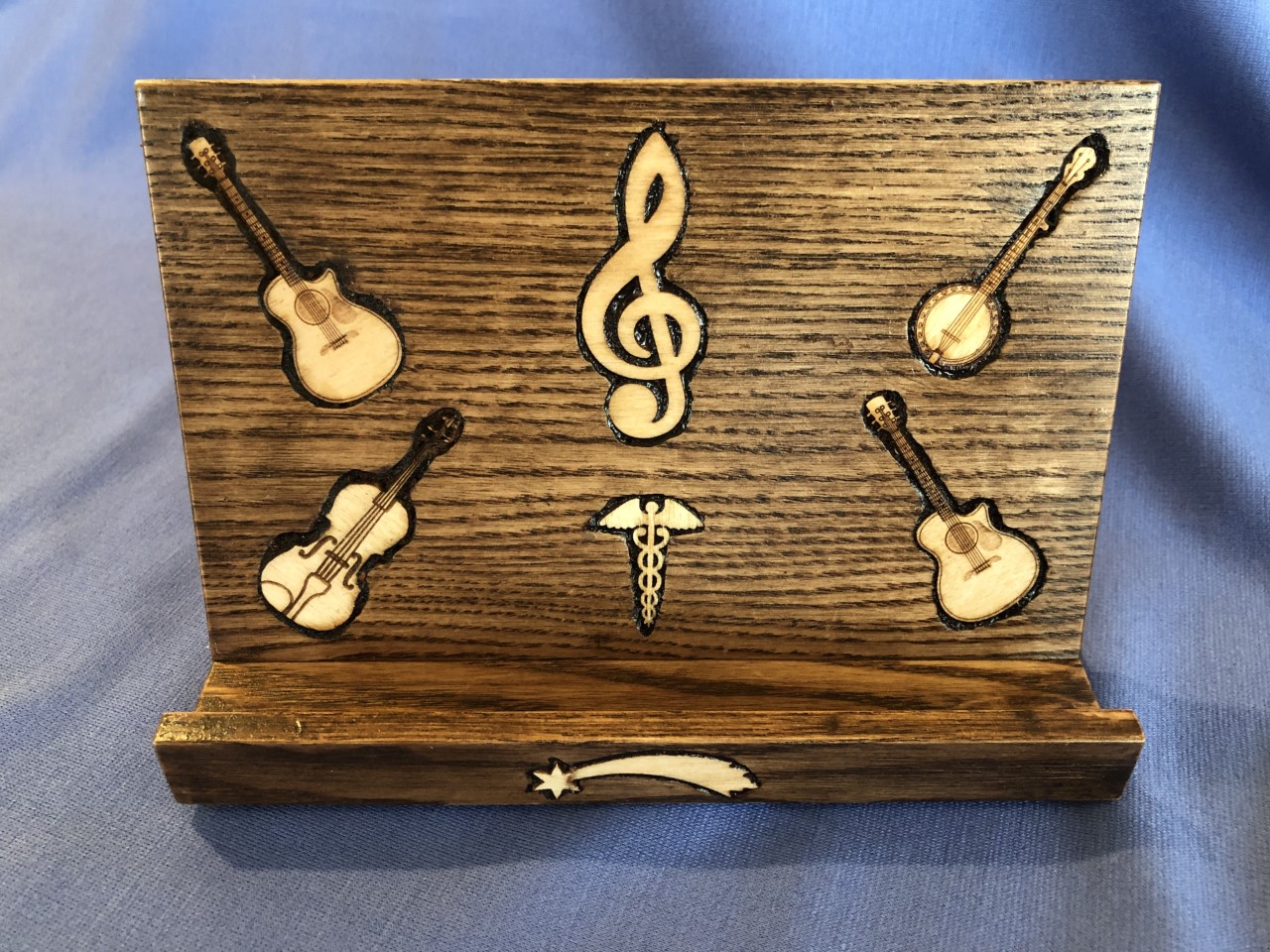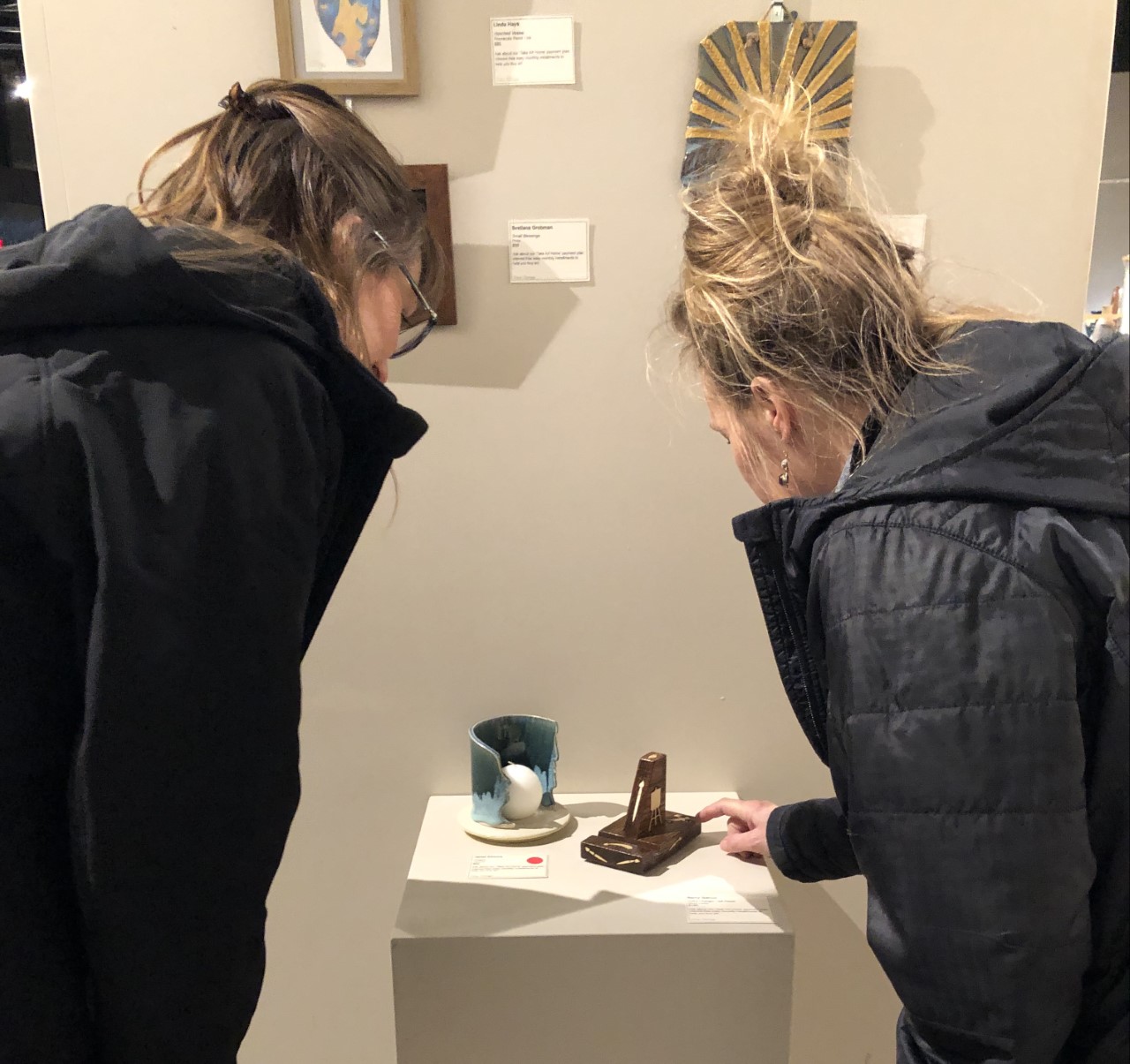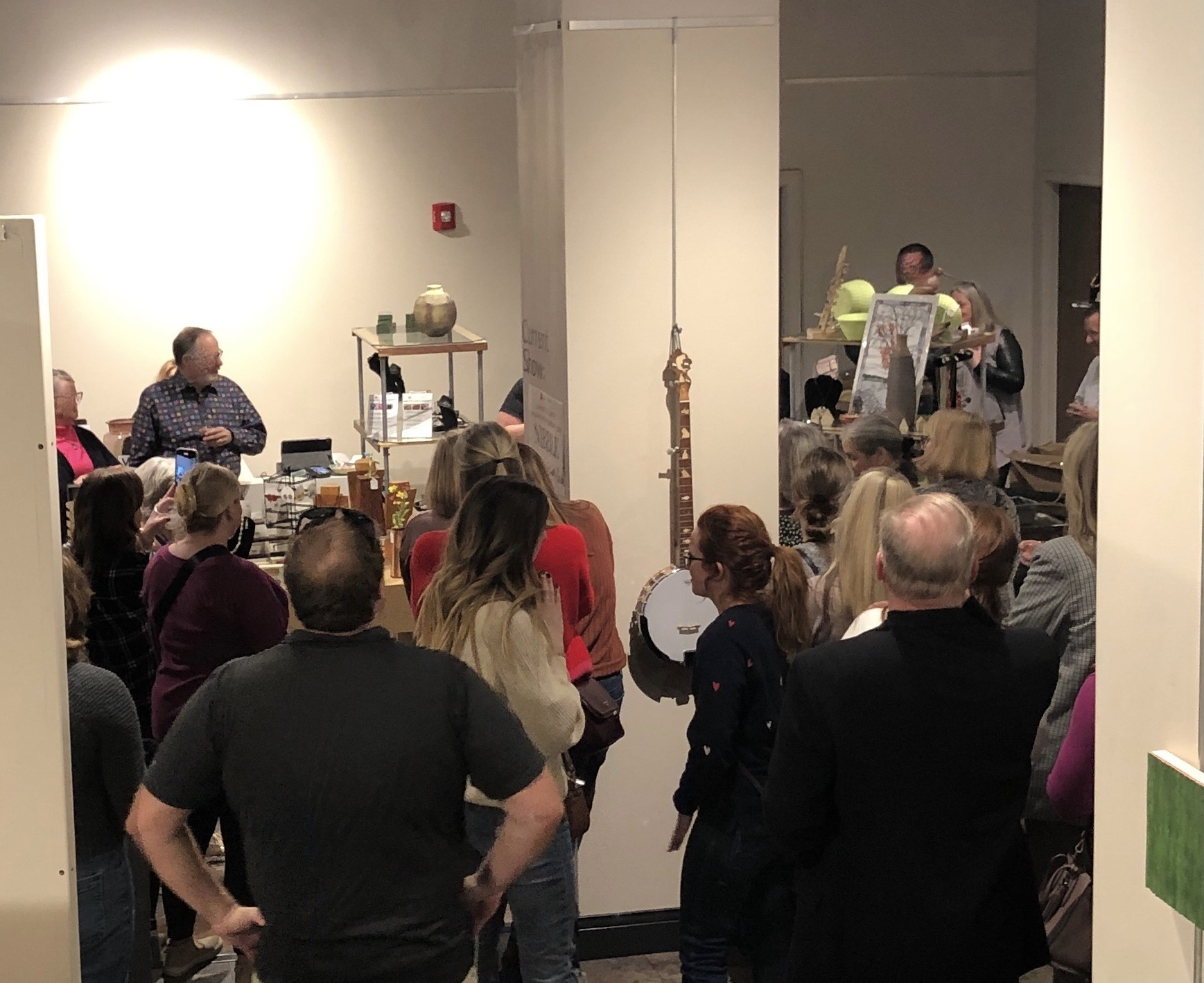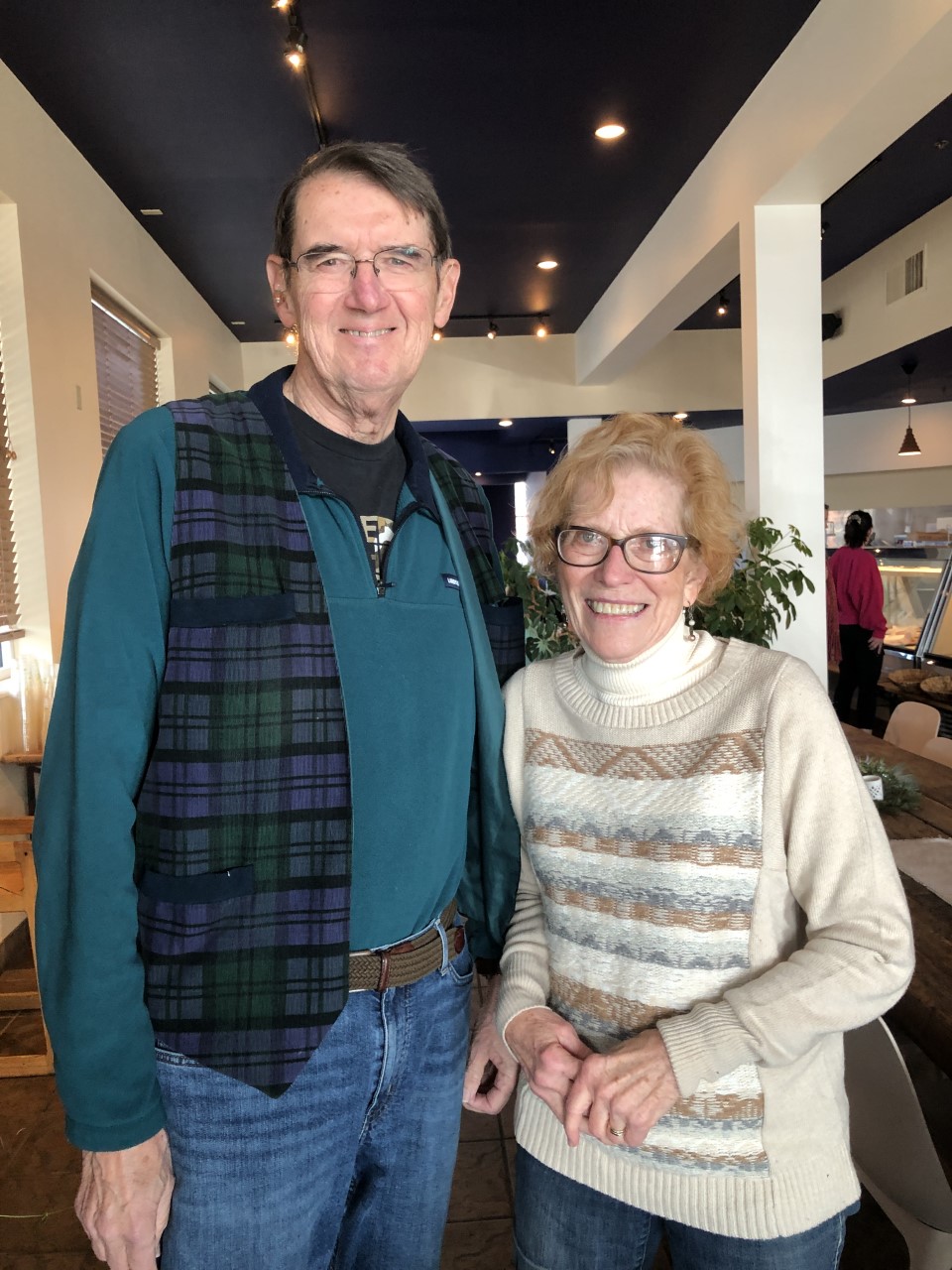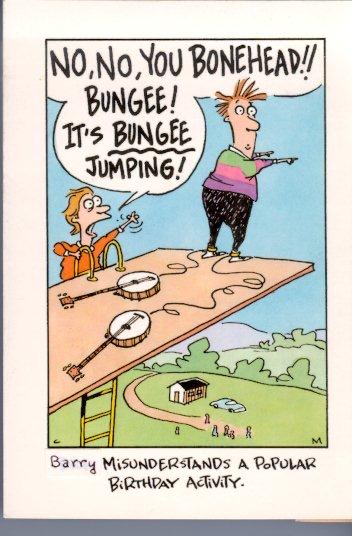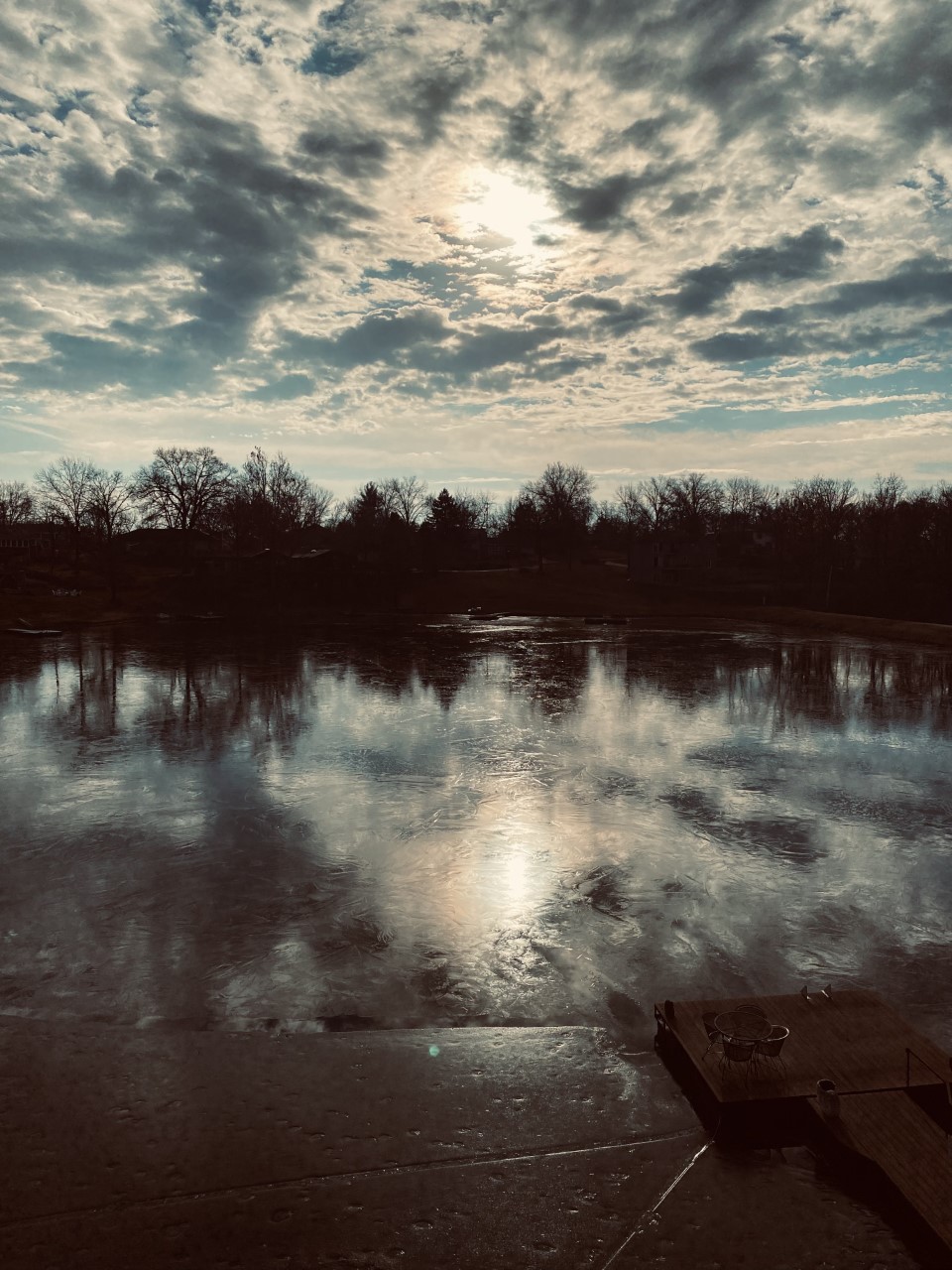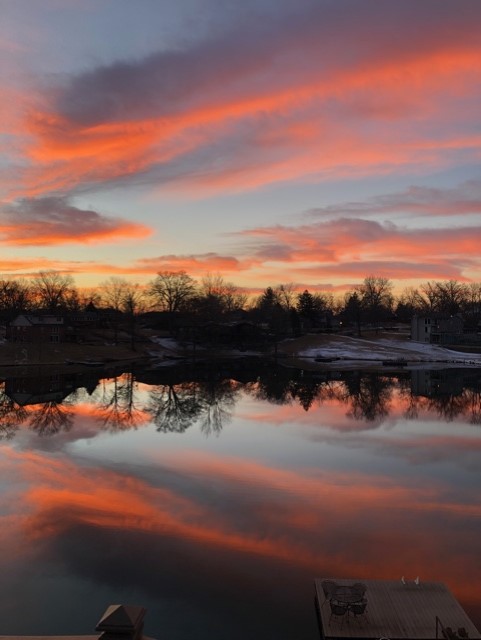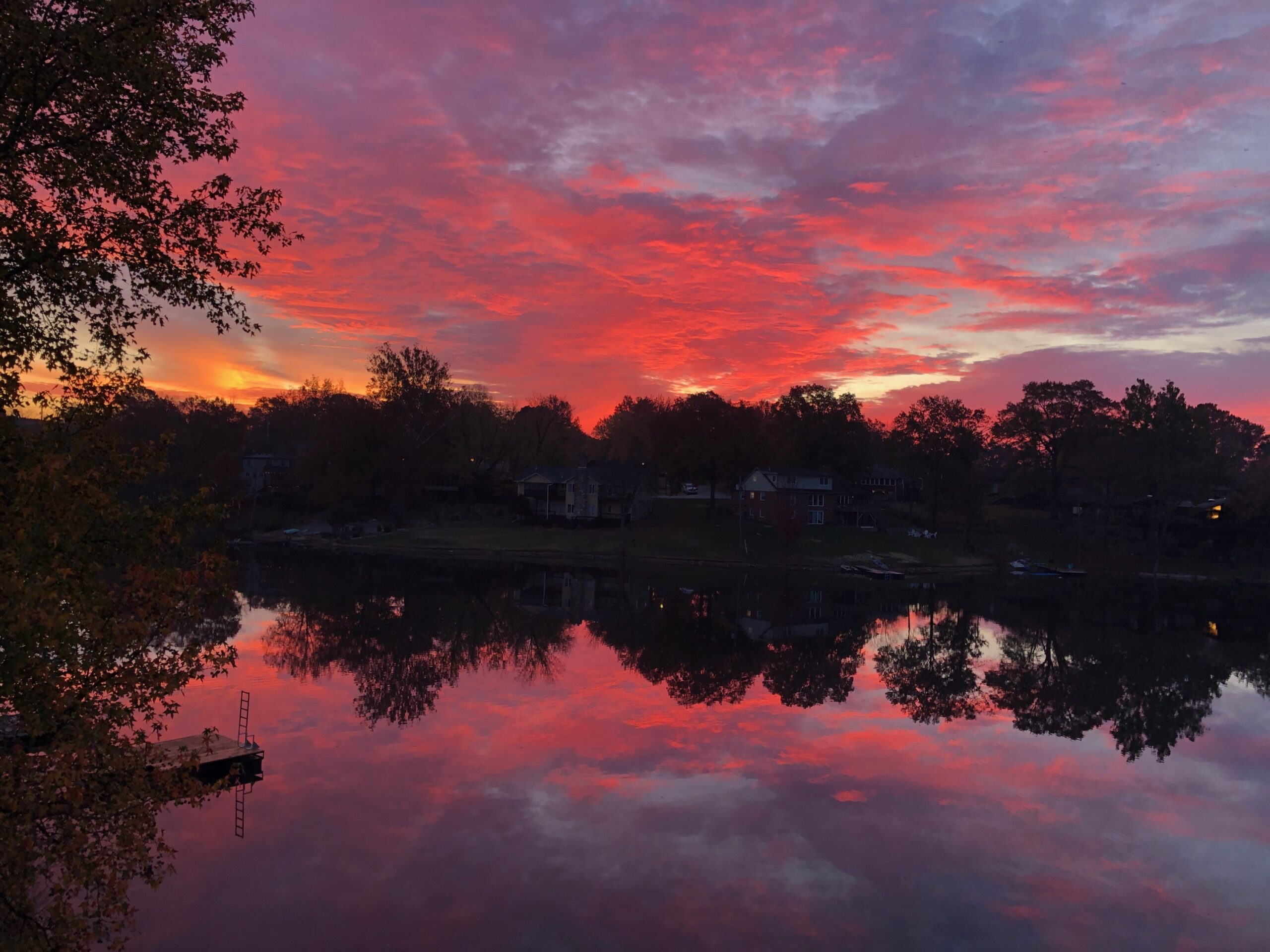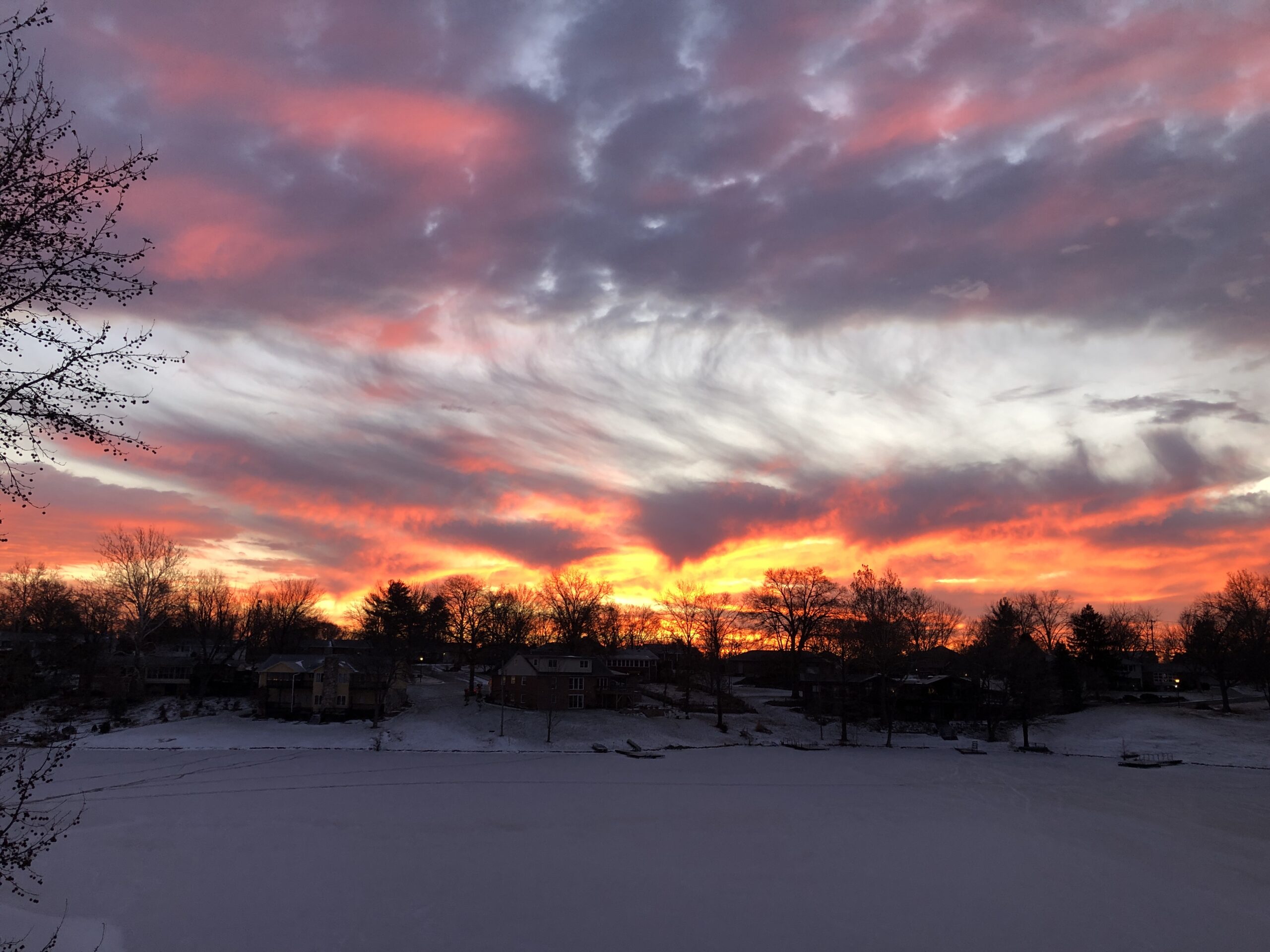The springtime exhibit at the community art league gallery is entitled “Touch.” Does this subtle message seemingly invite viewers to actually contact the artful items on display with their fingertips or to just imagine what the texture of the submitted works might feel like?
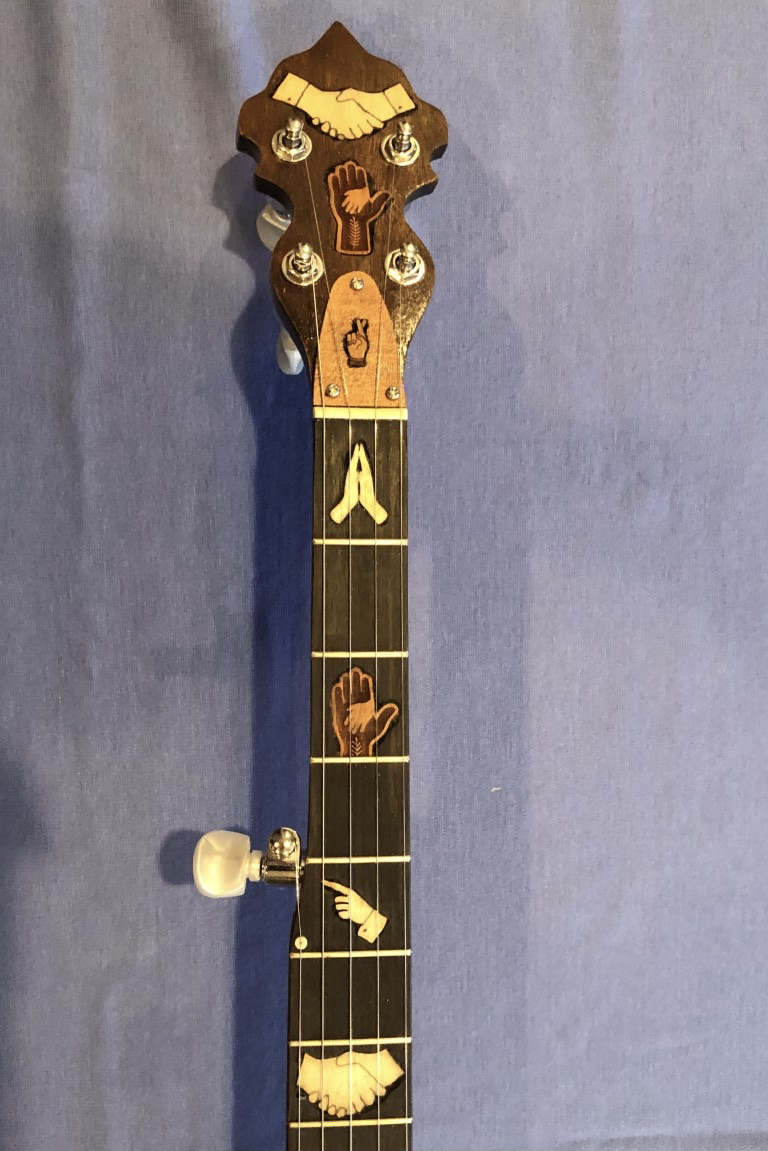
In the spirit of the theme of this juried competition, the BRC founder crafted the “Amity Banjo” displaying touching hands that illustrate friendship and peace- valuable commodities in our troubled world. In concert with the title of the exhibit, a hand inlayed at the fifth fret space points to the 5th tuning peg inviting the viewer to touch it.
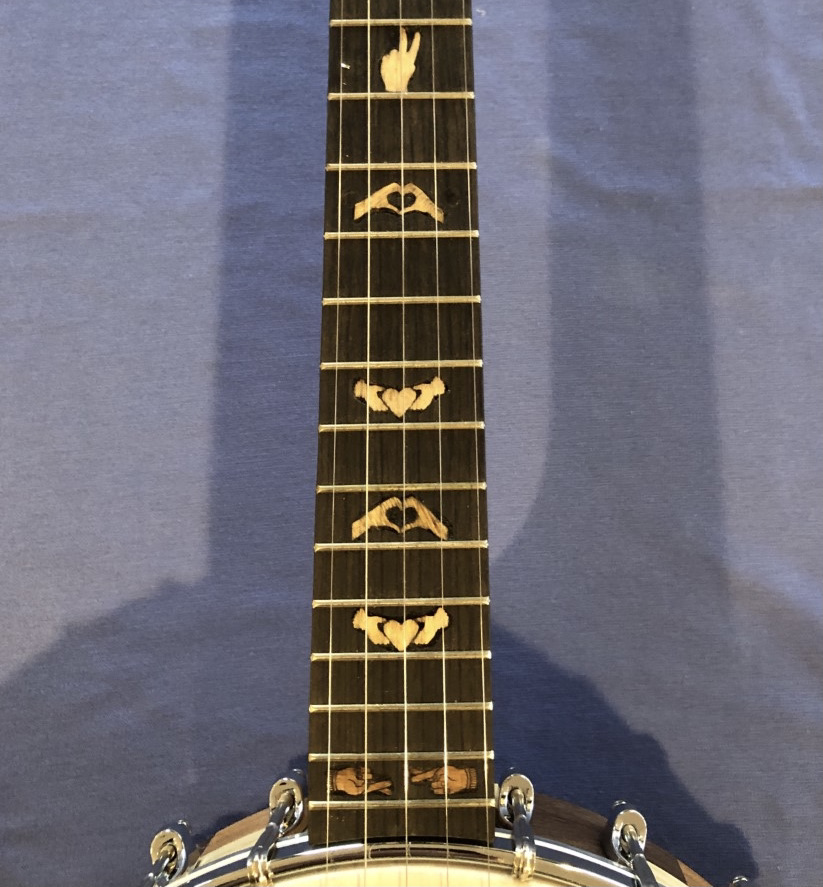
The upper neck fingerboard depicts hands posturing a heart, the peace sign, and an image similar to the Irish Claddagh which traditionally represents love, loyalty, and friendship.
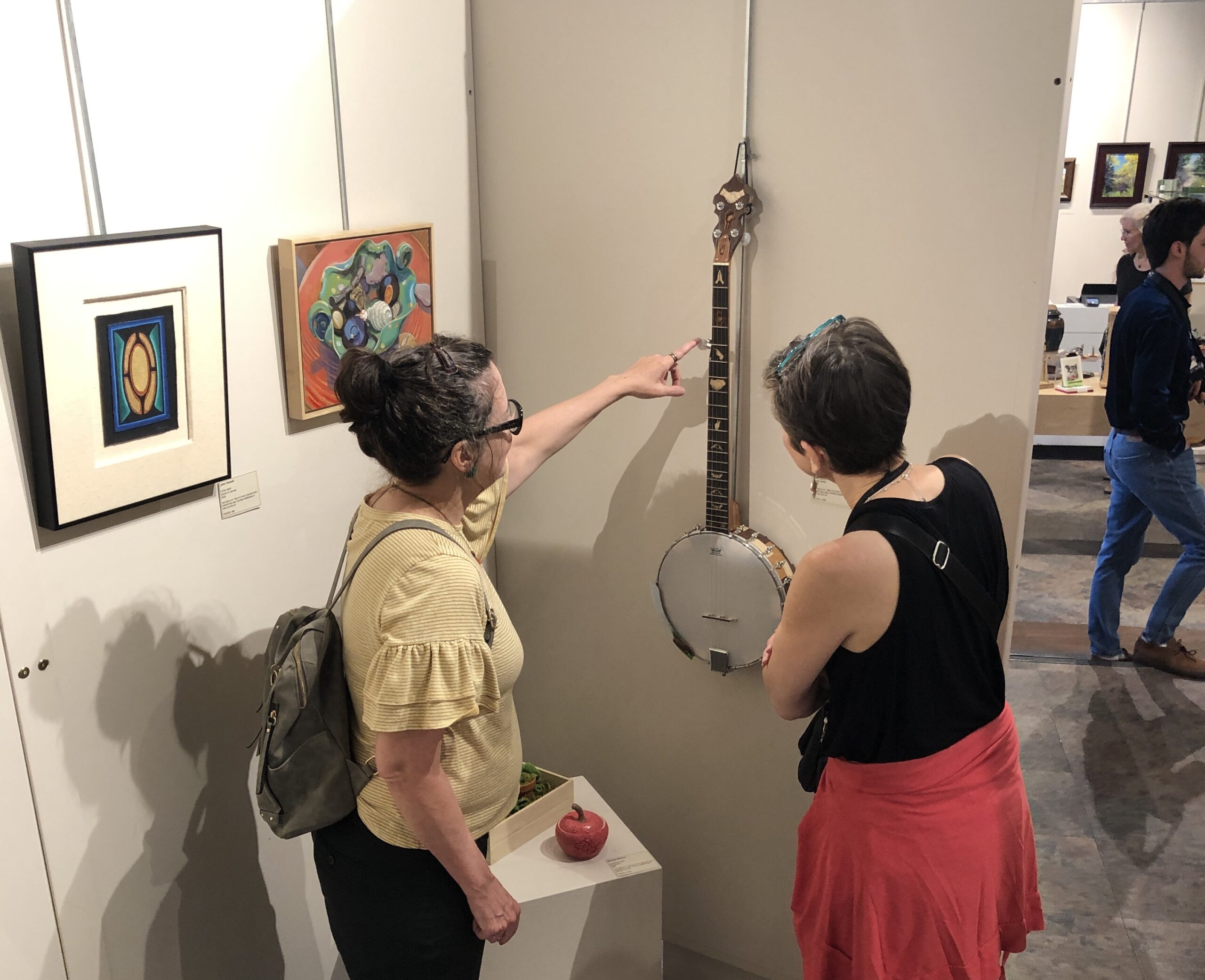
At the opening reception of the exhibit, a curious gallery visitor reaches out to touch the 5th string tuning peg as suggested by the pointing hand.
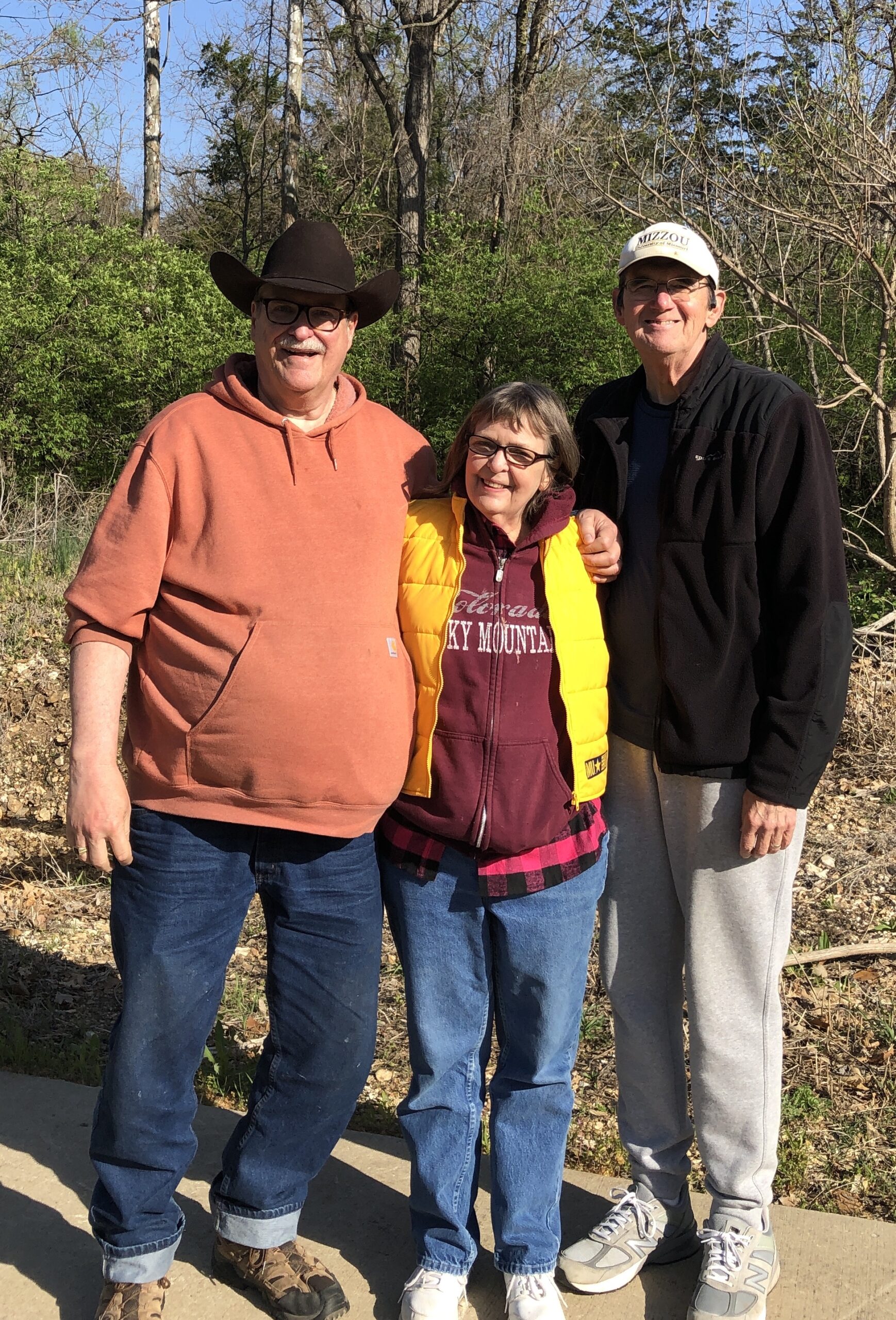
The “Amity Banjo” was purchased by a local artist who is a masterful oil-on-canvas painter and pictured above (cowboy hat) with his wife while recently meeting the BRC craftsman on a local hiking trail that they all frequent.
From the BRC: Keep in touch with your friends and the world around us.

